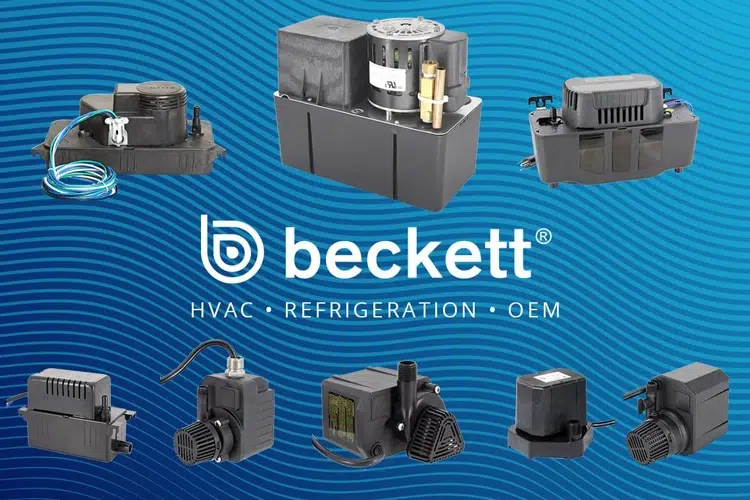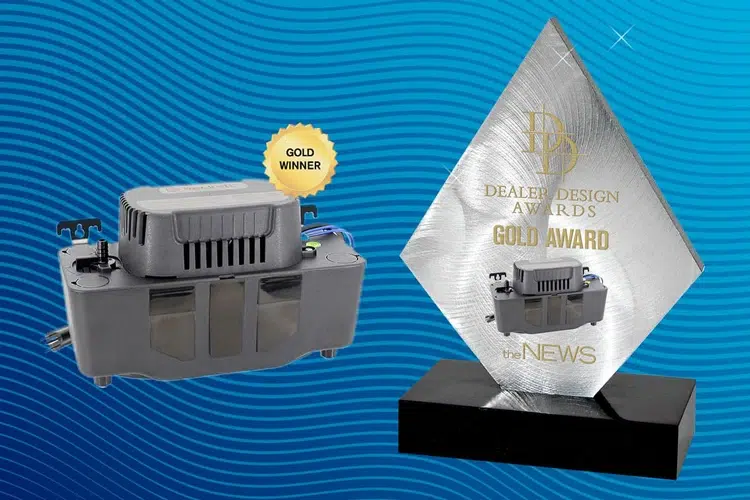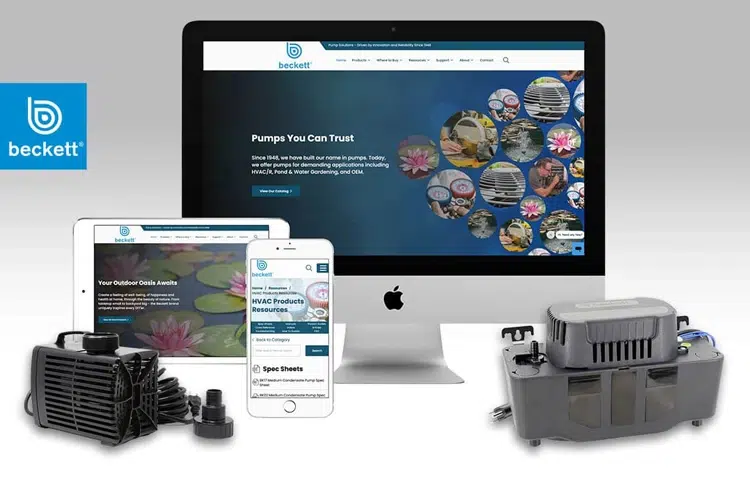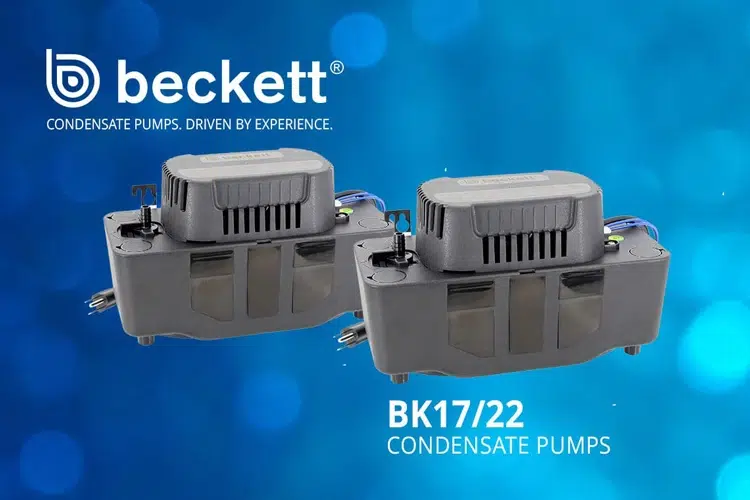Basic Condensate Pump Maintenance & Troubleshooting

Depending on your climate and application, most condensate pumps will require routine maintenance or periodic troubleshooting to ensure reliable operation. This article is intended to cover the maintenance basics for the Beckett BK17 and BK22 Series of Condensate Pumps.
Condensate Pump Maintenance
All Beckett condensate pumps are carefully tested prior to shipment to insure long, trouble-free service. However, if a pump is used in a dirty environment or is pumping other than clear, condensate water, the tank should be removed and cleaned periodically (every 6-12 months) with soap and water.
In most cases, condensate pump maintenance can be simple and easy. However, do not oversimplify the complexity of HVAC systems and the potential risks. All condensate pump applications vary and a technically qualified HVAC professional should be consulted to avoid electrical shock, fire hazard, unsatisfactory performance, equipment failure, personal injury, or property damage. WARNING: ALWAYS DISCONNECT THE CONDENSATE PUMP FROM THE ELECTRICAL SUPPLY BEFORE SERVICING.
You should always reference the user manual for your specific Beckett Condensate pump model. User manuals can be found and downloaded by searching the Beckett HVAC Product Catalog for your model or using our HVAC Product Resources.
Condensate Pump Installation
For maintenance reference, the following are the recommended installation specific to the Beckett BK17 and BK22 Series of Condensate Pumps (drawing below left).
- Select a location for the TANK that is level and below the condensate pan drain.
- The unit may be mounted on a wall by MULTI-SLOT METAL MOUNT TABS on the tank, which are 8.0”, 8.35”, 9.33”, 10.3” or 10.65” apart.
- The BULLSEYE LEVEL helps to confirm the pump is installed level.
- Connect the CONDENSATE DRAIN, using flexible tubing or PVC pipe into one of the four top inlets. When removing the inlet cover, make sure it does not remain inside the tank. Be sure the tubing or pipe extends below the lid 1” or more but not all the way to the bottom (obstructing inlet flow or causing a siphon).
- Discharge connection to CHECK VALVE may be made with 3/8” vinyl tubing secured by hose clamp (not included). NOTE: If it becomes necessary to replace the check valve, a check valve replacement kit is available. Instructions for installing are included in the kit.
- Once the DISCHARGE TUBING has been extended to the required height it should be slanted downward, if possible, to assist drainage. NOTE: For best results, do not extend discharge tubing beyond 17’ vertically for BK17 and 22’ for BK22. (Refer to performance chart.)
- The SAFETY SWITCH leads should be connected for proper operation of the pump. Using this feature may prevent damage from condensation overflowing if the discharge becomes blocked or the pump fails. The leads may be connected in series with the low-voltage thermostat circuit to shut down the heating/air-conditioning system if the water level in the pump tank rises beyond normal, or they may be connected to an external alarm.
- To provide maximum mounting positions the tank LID may be removed and rotated 180º so that the check valve will be on the opposite side of the unit. To remove the LID from the TANK, insert a slotted screwdriver in the lid’s slot and pry the tank outward, while lifting the lid. After removing and rotating, be sure the LID snaps back into place firmly.
- When all mounting and water connections are secure, connect the unit to the electrical supply.
- To test pump operation, lift the TEST TAB up and down to make sure the MAIN SWITCH and MOTOR are working.
Condensate Pump Troubleshooting
The following steps are specific to the Beckett BK17 and BK22 Series of Condensate Pumps. Always reference the user manual for your specific Becket condensate pump model for information on installation and maintenance.
If the pump fails to run, please check the following while referencing the Troubleshooting Components in the drawing (above right):
- Be sure the pump is getting electrical power. Try another outlet to be sure.
- Examine discharge tubing for any kinks or blockages. Also, be certain that the intake tubing or pipe is not obstructed.
- Disconnect power and remove the ENCLOSURE, item 2, and spin the FAN, item 3, by hand to be sure that the motor is free.
- Be certain that the MAIN SWITCH, item 1, and the SAFETY SWITCH, item 4, are fully “snapped” into their mounts.
- If further disassembly is required, push the sides, item 5, on both ends, to remove the TANK, item 6.
- Examine the PUMP-CHECK VALVE ASSEMBLY, at its INTAKE, item 7, for any obstructions. The CHECK VALVE, item 8, can be removed by pressing the BLOCKING PLATE, item 9, and then turning the CHECK VALVE counterclockwise.
If you need assistance or have further questions, please consult your local HVAC service professional or contact the Beckett Customer Service Team for assistance. Please note, Beckett Customer Service can only provide basic support in regard to condensate pump installation, maintenance, and troubleshooting. Condensate pumps should only be installed and serviced by technically qualified personnel who are familiar with the correct selection and use of the appropriate tools, equipment, procedures, and local building codes.





